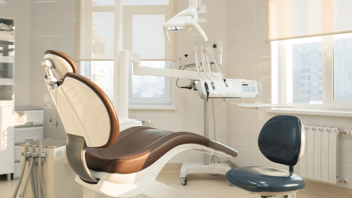The KPIs that Determine Your Dental Practice’s Success

Dental practices are unlike most other businesses—after all, it’s not like you can walk into just any business and get a root canal. But one way dental practices are similar to other businesses is that, just like every other business, profitability is key. Retailers, law offices, consultants (and even accountants) know that a successful business is a profitable business. A dental practice is no different. The best way to know how your practice is doing and where you can improve is by monitoring KPIs.
 Why Are KPIS Important?
Why Are KPIS Important?
Key performance indicators (KPIs) assess your business’s growth, profitability, and more.
These financial metrics give you detailed information about how your practice is performing and when you should change your strategy.
Dental practices won’t have the same KPIs because they are based on business objectives. Here are some of the top dental practice KPIs you should monitor:
Profit Margin
In layman’s terms, your profit is what you have left after paying your bills each month. To calculate your net profit margin, subtract total expenses from total revenue and divide the result by revenue. You could spend more than you make if you only monitor your revenue. The average dental practice has a gross profit margin of 40%.
If your profit margins aren’t in that range, consider negotiating prices with your suppliers, reducing overhead costs, or changing your pricing structure.
Case Acceptance Rates
What percentage of your proposed treatment plans do your patients accept? To determine your case acceptance rate, divide the number of accepted treatment plans by the total number of suggested treatment plans.
Aim for a treatment acceptance rate of at least 90% for single-tooth procedures. To improve your case acceptance rates, help your clients understand their treatment options, benefits, and costs. Offer financing for those who can’t pay with cash.
Overhead Rate
Overhead cost is one of your most important KPIs. It includes anything you need to run your practice, including administrative staff salaries, rent, supplies, marketing, and advertising. A lower overhead rate (aim for 60% or less) means higher profits.
To calculate your overhead rate, divide the total overhead costs by your total income from sales.
If cash flow is low, seek ways to reduce your direct or overhead expenses.
Create categories of expenses–such as office staff, office supplies, rent and utilities–to determine the overhead rate. Create categories such as lab fees, dental supplies, and treatment staff (dentist, dental assistants, dental hygienist) to determine the direct cost (COGS).
Related: Cash Flow Too Slow? 5 Ways For You To Improve Cash Flow At Your Dental Practice
Average Production Per patient
This KPI shows how valuable each patient is. Because they require more care, the average production per new patient should be at least twice as high as per existing patient. If it’s not, consider adding services, such as periodontal screenings. Divide your total revenue from new patients by the number of new patients to determine your average production rate per new patient. You can also add services to increase average production for existing patients.
Average Production per visit
If you see a high number of patients but each brings in a lower amount, limit the number of appointments. That enables you to give each patient more comprehensive care. Alternatively, you can see more patients. Tracking APV can also tell you if you need more employees so you don’t burn out.
Accounts Receivable Turnover
This KPI measures outstanding balances based on how long they have existed.
Accounts receivable can tell you if your collection process is effective and help you identify strategies to reduce late payments.
In addition, low accounts receivable turnover reduces your practice’s profitability. To calculate your accounts receivable rate, divide your net sales by your average accounts receivable. Aim to have 70% of your patient accounts paid within one month.
Related: 7 Bookkeeping Tips Dentists Can Use Today To Make Managing Your Practice Easy
Patient Retention Rate
The patient retention rate measures the percentage of existing patients who return to your office for treatment. A high retention rate demonstrates patient loyalty and shows you provide exceptional care. To calculate your retention rate, divide the number of patients who come for follow-up visits by the total number of patients you see during a given period.
To improve patient retention rates, increase communication by sending appointment reminders via text, email, or postcard and offering financing options.
Active vs. Inactive Patients
To find your active patient rate, add the number that have visited your practice in the last two years. Then, add the number of patients who haven’t been in the same period.
Comparing these two numbers tells whether your patients are happy with your services.
To improve your active patient rate, solicit feedback, improve services and offerings, and address concerns expeditiously.
Related: The Essential Guide To Dental Payroll Accounting
As you can see, KPIs are indispensable tools for dental professionals. These metrics provide vital insights into the efficiency and effectiveness of dental practices, ensuring that patient care remains at the forefront.
By tracking KPIs dentists are equipped to make informed decisions to enhance their services, streamline operations, and ultimately deliver top-notch oral healthcare. KPIs serve as the compass guiding dental practices toward continual improvement and excellence in patient care.
Chaliff + Associates: The Knowledgeable Memphis CPA Firm For Dentists
At Chaliff + Associates, we understand the financial pressures of running a dental practice. Our dental CPAs can help monitor your KPIs so you stay profitable and provide an exceptional experience. Request a free consultation today!



.png?width=352&name=Untitled%20design%20(4).png)

